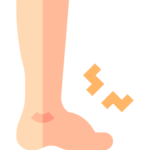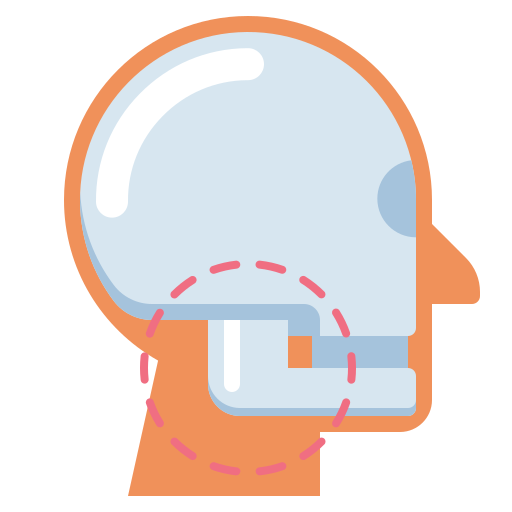Reconstructive Surgery
zsr stapler circumcision
Circumcision is the surgical removal of the foreskin of the penis. The Stapler circumcision device is an advanced modern stapler used for this surgery. It aids in cutting and stapling the foreskin of the penis. The procedure is painless, ensures minimum blood loss and involves no stitches. Stapler Circumcision is definitely better and safer than the traditional surgery and offers fast healing after the circumcision.

- No blood loss
- Quick to perform
- Good and quick healing







Breast reconstruction
The goal of breast reconstruction is to restore one or both breasts to near normal shape, appearance, symmetry and size following mastectomy, lumpectomy or congenital deformities. Breast reconstruction often involves multiple procedures performed in stages and can either begin at the time of mastectomy or be delayed until a later date. Breast reconstruction generally falls into two categories: implant-based reconstruction or flap reconstruction. Implant reconstruction relies on breast implants to help form a new breast mound. Flap (or autologous) reconstruction uses the patient’s own tissue from another part of the body to form a new breast.
Cleft lip & cleft palate repair
Cleft lip and cleft palate are among the most common birth anomalies affecting children in North America and worldwide. The incomplete formation of the upper lip (cleft lip) or roof of the mouth (cleft palate) can occur individually, or both defects may occur together. The conditions can vary in severity and may involve one or both sides of the mouth. Surgery is required to repair cleft lip and/or cleft palate.








Cranio Facial Surgery
Craniofacial surgery is a surgical subspecialty that deals with congenital and acquired deformities of the head, skull, face, neck, jaws and associated structures. Although craniofacial treatment often involves manipulation of bone, craniofacial surgery is not tissue-specific; craniofacial surgeons deal with bone, skin, nerve, muscle, teeth, and other related anatomy.
Onco Reconstruction
Reconstructive surgeons may perform skin, bone or tendon grafts, use implants to replace a muscle or a damaged body part, or transplant bone or tissue to replace an area has been removed. These procedures may help improve patients appearance, reduce scarring or disfigurement or repair injured body parts that may have been damaged. The surgeries may also help cancer patients regain their confidence, dignity and sense of self, especially after experiencing the impacts of breast and head and neck cancers.








Hand Surgery
If your hand is impaired in any way, surgery may improve your condition. This type of very specialized surgery can treat diseases that cause pain and impair the strength, function and flexibility of your wrist and fingers. Surgery seeks to restore to near normal the function of fingers and hands injured by trauma or to correct abnormalities that were present at birth.
Lymphedema surgery
Lymphedema is a condition characterized by painful swelling in the extremities (arms and/or legs). The swelling occurs when lymph nodes are no longer facilitating the proper drainage of lymph fluid from an area of the body. Primary lymphedema is a congenital condition; however, in the developed world, secondary lymphedema is the most common type of lymphedema. This condition may be caused by infection, trauma or, most commonly, treatment of cancer.








Microsurgery (Free Flap Surgery)
Reconstructive microsurgery is a surgical discipline in which specialized operating microscopes and precision instrumentation are used to repair intricate structures such as blood vessels and nerves less than a few millimeters in diameter. This field has made a major impact to restore form and function to individuals impaired by trauma, cancer and congenital anomalies.
Migraine Surgery
The goal of migraine surgery is to reduce or eliminate headache frequency, duration and pain. Migraines can be associated with compression and irritation of sensory nerves and vessels around your head. When these compression points are released during surgery, the severity of migraines may decrease or you may not experience further migraines.








Orthognathic Surgery
Orthognathic surgery, or jaw straightening surgery, involves a spectrum of surgical procedures on the upper jaw, lower jaw and chin, to improve both form and function. Orthognathic surgery may be undertaken to improve how the teeth fit together, to normalize or optimize facial proportions and/or to treat obstructive sleep apnea. Whether you want to improve your appearance or are experiencing functional problems, orthognathic surgery can be a life-changing procedure.
Lower Limb & Trauma Reconstruction
The requirements of lower limb trauma reconstruction are discussed with comment on the availability of plastic surgery services. The significance of early efficient soft tissue management is stressed and a plea is made for better cooperation between plastic and orthopaedic surgery in both training and practice.








Peripheral Nerve Surgery
Peripheral nerve surgery encompasses acute nerve injuries, entrapment neuropathies and nerve sheath tumours. It is practiced by surgeons of varying backgrounds with expertise in orthopaedic, neurological, plastic and reconstructive surgery. Increasingly, several international centres of excellence have emerged whose surgeons are experts in the field and which offer the multidisciplinary care that patients with peripheral nerve disorders require. Most of these centres have websites outlining the services they offer but very few go into the level of detail which would clarify the concerns and queries that this group of patients commonly have.
Brachial Plexus Surgery
The brachial plexus is a network of intertwined nerves that control movement and sensation in the arm and hand. A traumatic brachial plexus injury involves sudden damage to these nerves, and may cause weakness, loss of feeling, or loss of movement in the shoulder, arm, or hand.
The brachial plexus begins at the neck and crosses the upper chest to the armpit. Injury to this network of nerves often occurs when the arm is forcibly pulled or stretched.
Mild brachial plexus injuries may heal without treatment. More severe injuries may require surgery to regain function of the arm or hand.








Maxillo Facial Surgery
Maxillofacial surgery is a special type of dentistry. It involves operations to correct diseases, injuries and defects of your face, jaw or mouth. Maxillofacial surgeons are advanced specialists who diagnose and treat problems with:
- Bones and tissues of your jaw and lower face (maxillofacial area).
- Roof of your mouth (palate).
- Teeth.
BURNS Surgery
There are two main categories of burn surgery. Acute and Reconstructive. Acute burn care occurs immediately after the injury. It is delivered by a team of trauma surgeons that specialize in acute burn care. Many smaller burns can be treated with outpatient options. Some patients may need reconstructive burn surgery after the initial burn wounds have healed. This type of care is usually provided by a plastic surgeon. The goals of reconstructive burn surgery are to improve both the function and the cosmetic appearance of burn scars. This involves altering scar tissue, with both non-operative and operative treatment.








Chronic Wound Mangement
Chronic wounds can occur for any number of reasons. The main reason that chronic wounds occur is due to increased bacterial load, lack of blood supply, infection, or the wrong type of treatment. Other chronic wounds occur due to the intensity of the trauma. It’s important to monitor all of your wounds to make sure that they don’t turn chronic.
Varicose Vein Surgery (Laser)
Varicose veins are abnormally large veins often seen in the legs. Normally, blood travels from the heart to the legs by arteries and back to the heart through veins. Veins have one-way valves that allow blood to return from the legs against gravity. If the valves leak, blood pools in the veins, and they can become enlarged or varicose. Endovenous ablation is an image-guided, minimally invasive treatment. It uses radio frequency or laser energy to cauterize (burn) and close the abnormal veins that lead to varicose veins.








Diabetic Foot Surgery
Diabetic foot vascular surgery is a treatment for an open wound, known as diabetic foot ulcers, on the foot of a diabetic person. The goal of treatment is to accelerate the healing process and to decrease the chances of further infection. The treatment also aims to prevent the recurrence of the infection and helps in the proper management of diabetes ulcer formations.





















